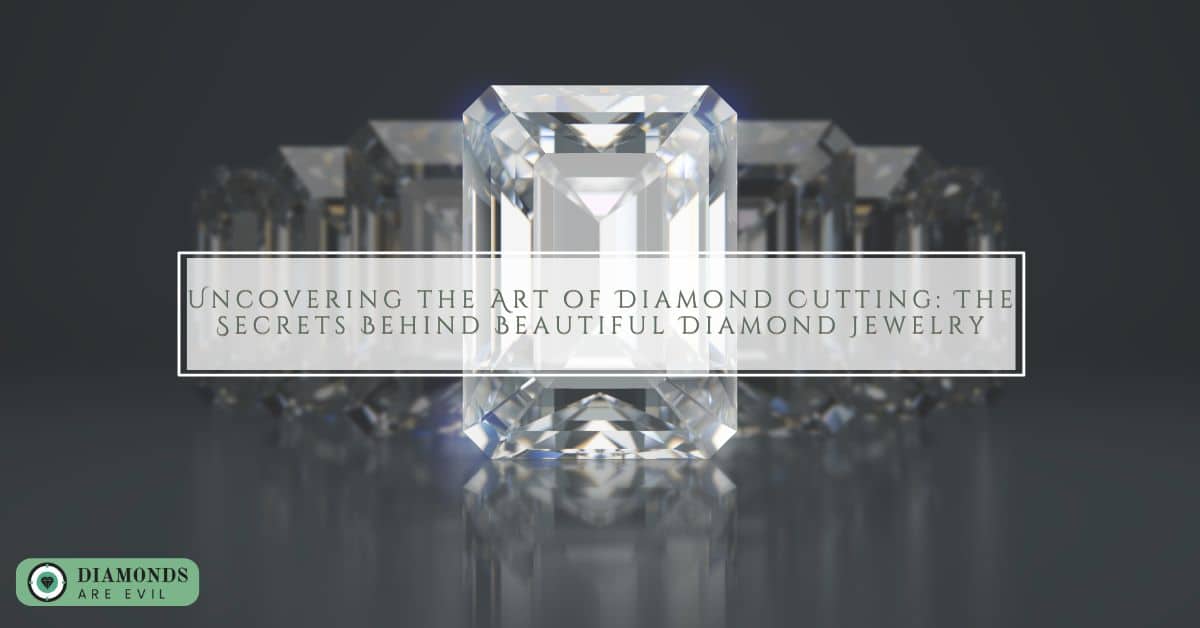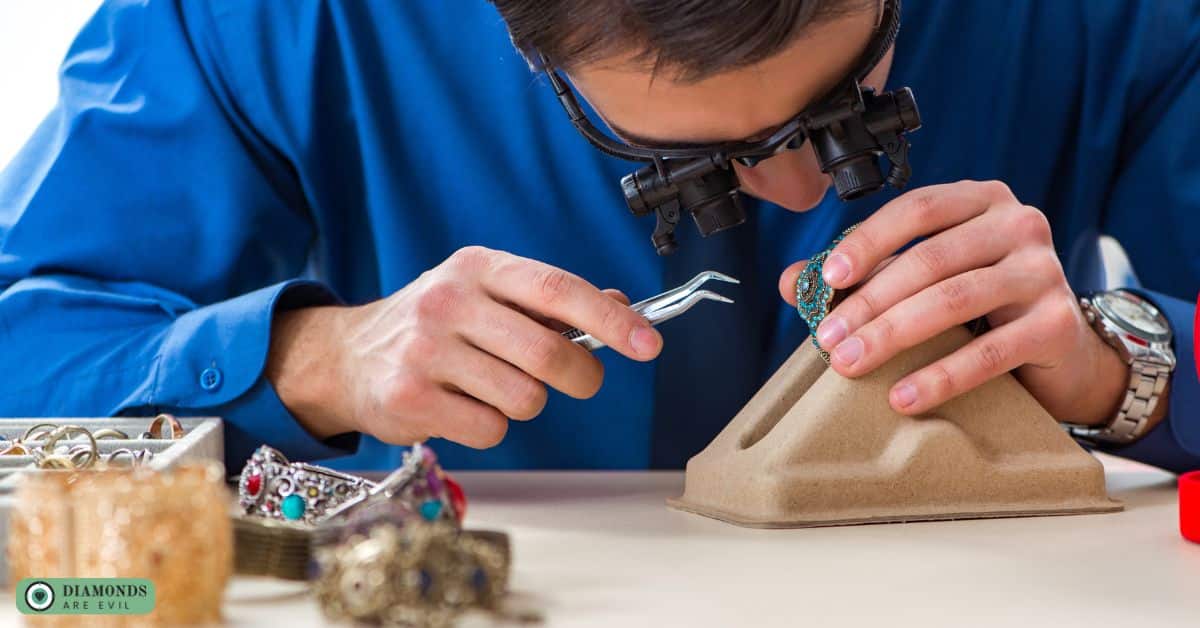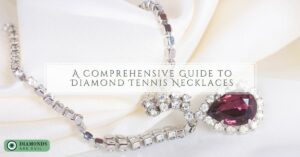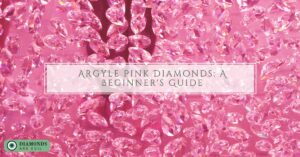Diamond cutting is an art form that has been practiced for centuries. The process involves transforming a rough diamond into a polished gemstone, bringing out its natural brilliance and fire. Skilled diamond cutters use mathematical precision and advanced technology to create the perfect cut, resulting in beautiful diamond jewelry that is highly valued and cherished.
The art of diamond cutting is a complex and fascinating practice that requires years of experience and knowledge. In this blog post, we will explore the secrets behind diamond cutting and how it contributes to the creation of stunning diamond jewelry.
Diamond Cutting
Diamond cutting is the art of transforming a rough diamond into a gemstone. It is not only beautiful but of high value. It involves a careful process of cutting, shaping, and polishing. The rough diamond to reveal its inner beauty and potential. Diamond cutting requires a high level of precision and expertise. This is to ensure maximum sparkle, brilliance, and fire.
The process involves cutting the diamond into specific angles and facets. It is to achieve the desired optical properties. The diamond cutter’s skill and experience are essential in bringing out the diamond’s unique qualities. It include its scintillation, dispersion, and light reflection. Diamond cutting is a highly specialized skill that involves a unique blend of art, science, and technology.
Step-by-Step Process for Cutting a Diamond
Cutting a diamond is an intricate process that involves numerous steps and a great deal of skill. The process of diamond cutting involves analyzing a rough diamond. Deciding what kind of cut will yield the most value, and then carefully shaping the diamond into its final form. With the help of modern technology and skilled professionals, it is possible to create the most beautiful and unique diamonds. Here are the step-by-step process for cutting a diamond:
Step 1: Preparing the stone
To prepare the stone for cutting a diamond, first, the diamond is cleaned and examined for any flaws or inclusions. Next, a line is marked on the diamond to determine the direction of the cut. Then, a laser or saw is used to make the initial cut, and the diamond is shaped using a grinder or polisher.
Step 2: Determining the shape and size of the diamond
To determine the shape and size of a diamond, the diamond is examined and measured using various tools such as a loupe, gauge, and proportion scope. The shape is chosen based on the original shape of the diamond and the desired shape. The size is determined based on the weight of the diamond, which is measured in carats.
Step 3: Using a saw to create the desired shape
Using a saw to create the desired shape in a diamond involves making a deep cut in the diamond using a laser saw or a diamond blade saw. This cut is made along the marked line on the diamond, which determines the direction of the cut. The sawing process requires precision and expertise to ensure that the diamond is not damaged or wasted.
Step 4: Bruting and blocking for symmetry
Bruting and blocking are essential steps for achieving symmetry in a diamond. Bruting involves shaping the diamond’s edges to make them perfectly round, while blocking involves cutting the diamond’s facets to achieve a precise and symmetrical shape. This process is done using a diamond cutting wheel and requires great skill and attention to detail to ensure that the diamond achieves the desired brilliance and fire.
Step 5: Faceting and polishing for brilliance
Faceting and polishing are crucial steps in achieving the desired brilliance and fire in a diamond. Faceting involves cutting and shaping the diamond’s facets to reflect light in a way that maximizes its sparkle.
Polishing follows, smoothing out the diamond’s surface to ensure that light can pass through it without obstruction. This process is done using a polishing wheel and requires precision and expertise to achieve a high-quality finish.
Types of Diamond Cuts
Diamonds are one of the most precious and sought-after stones in the world. One aspect that sets diamonds apart is their unique and intricate cuts. The cut of the diamond refers to the way the stone has been shaped.
The way it was polished to reflect light and sparkle. Different cuts can enhance certain features of a diamond. This makes it stand out even more. There are many different types of diamond cuts, each with their own distinct style and charm.
Round brilliant cut diamonds
Round brilliant cut diamonds are the most popular diamond cut due to their exceptional brilliance and fire. They are cut with a circular shape and a pattern of facets that maximize the diamond’s ability to reflect light. This cut is known for its classic and timeless appeal and is often used for engagement rings.
Princess cut diamonds
Princess cut diamonds are a popular choice for engagement rings, known for their elegant and modern look. These diamonds are square in shape and have pointed corners, creating a unique and eye-catching design. With a brilliant cut, the princess cut maximizes the diamond’s brilliance and sparkle, making it a stunning choice for those who love a little extra shine.
Emerald cut diamonds
Emerald cut diamonds are a popular choice in the diamond industry due to their unique shape and elegant appearance. Unlike the typical round cut, the emerald cut has a rectangular shape with trimmed corners and elongated facets that create a hall of mirrors effect. This cut is perfect for those who want a classic yet modern look that highlights the diamond’s clarity rather than its sparkle.
Marquise cut diamonds
Marquise cut diamonds are a classic yet unique diamond cut. Named after the French marquise who inspired the shape, this cut is long and narrow with pointed ends, resembling an football or eye shape.
It is a cut that is designed to maximize carat weight and give the appearance of a larger diamond. Marquise cut diamonds are often set with prongs, allowing more light to enter and reflect from the diamond.
Pear shaped cut diamonds
This type of diamond cut boasts a unique shape, with a pointed end and a round bottom. Not only does this cut provide elegance to any piece of jewelry, but it also gives the illusion of longer, slender fingers when worn as a ring. There are different variations of the pear cut diamond, including the marquise cut and oval cut, which are also popular among diamond enthusiasts.
Common Pitfalls to Avoid When Cutting a Diamond
Diamond cutting is an art that requires precision and expertise. While the process may seem simple, common pitfalls can derail your efforts and leave you with less than desirable results.
Avoiding these mistakes is crucial to achieving a high-quality diamond cut. With careful attention to detail and a thorough understanding of the process, you can avoid these common pitfalls and produce a beautiful, flawless diamond cut.
Distortion of the shape or size
When cutting a diamond, it is crucial to pay attention to the shape and size of the gemstone. One common pitfall to avoid is the distortion of the diamond’s shape or size during the cutting process.
This occurs when the cutter is not precise or lacks attention to detail, leading to a significant loss of value for the diamond. A distorted shape or smaller size can result in a significant reduction in the diamond’s carat weight, which is one of the essential factors when determining its value.
Cracks or chips in the diamond
Cracks can occur when the diamond is exposed to too much pressure or heat during the cutting process. Chips, on the other hand, can happen when the diamond is accidentally hit by a cutting tool.
Both cracks and chips can significantly reduce the value of a diamond and should be avoided at all costs. Diamond cutters need to be extremely careful and skilled to ensure that the diamond remains intact and free from damage throughout the cutting process.
Excessive heat damage to the diamond
While diamonds are known for their hardness, they are still susceptible to heat damage during the cutting process. This occurs when the diamond is exposed to high temperatures for an extended period of time, causing it to crack or even shatter. To prevent this from happening, diamond cutters must carefully monitor the temperature of their cutting tools and take breaks to allow the diamond to cool down.
In Conclusion
The intricate work of diamond cutting is an art form that demands years of training and mastery. As we delve deeper into the world of diamond cutting, we come to realize that the craft behind these precious stones is no less than awe-inspiring.
The process of creating beautiful diamond jewelry involves precise calculations, careful handling and an intuitive understanding of geometry. It takes immense skill and creativity to unlock the true potential of these exclusive gems.





















